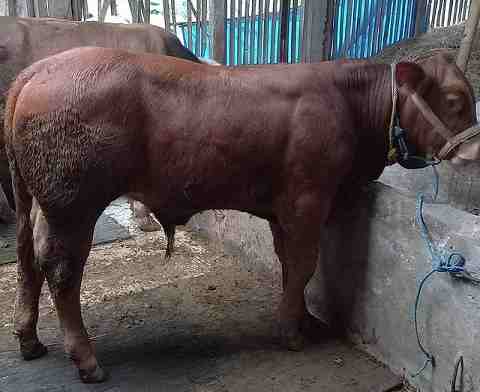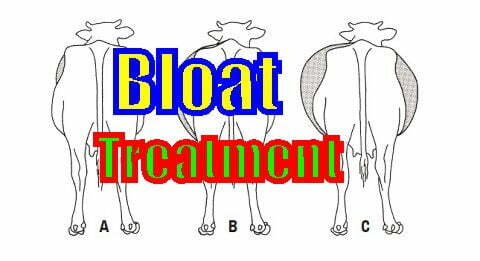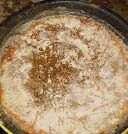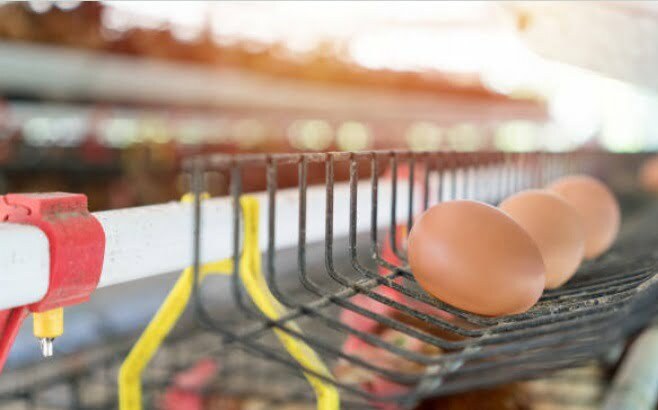How to make concentrate feed for cows can be done using the example formula in this article. Several cattle concentrate formulas can be used.
The ingredients are also local, and it is possible to do this.
Even so, this local origin concentrate material is not evenly distributed. In this region, there is a lot of material A, but material B is few. In other regions, conditions may be different.
So, if all the production costs are calculated, sometimes manufactured concentrate is more economical.
Cattle concentrate
We will know about cattle concentrate ingredients of which there are a lot of types. If it is difficult to imitate exactly, we can use an alternative.
Cattle concentrate is a feed ration with energy and nutrition that is dense and easy to digest so that it can increase the daily weight of the cow by a greater amount.
Since the main goal is to increase the daily weight of the cow, the concentrate should be the main protein source.
Therefore, usually, the concentrate circulating is required to have a crude protein content of at least 12% and crude fiber less than 18%.
The smaller the crude fiber, the better, because it will make the digestibility of the ration higher.
The nutritional standards for commercial cattle concentrate are:
The maximum water content of 12%.
Minimum 12% crude protein.
Maximum crude fiber is less than 18%.
The maximum crude fat is 6%.
Ash is not more than 10%.
Total Digestible Nutrient or TDN of at least 64%.
Type of feed given to cattle
In general, three types of feed can be given to cattle. Namely forages, concentrates and additives.
Forage must exist. Ruminants are obliged to eat forage or a source of this fiber. Be it cows, goats, or sheep.
Because the digestive system is designed for feed with high crude fiber.
Examples of forage that are commonly used to feed cows are straw, elephant grass, king grass, Setaria grass, corn straw, field grass, reeds, and other types of grass.
Legumes such as Indigofera can also be used for cattle. Even though they are rarely used and are less popular.
Actually, cows can live on grass feed alone. Without concentrate, it doesn’t matter. But the development of cows will be normal.
But it also depends on the quality of the grass too. If, for example, it can provide alfalfa, the development will also be good.
Different from concentrate. Cows cannot just be fed concentrate feed alone. The provision of concentrate to cows must be balanced with the provision of grass or feed as a source of fiber.
Too much concentrate can lead to acidosis and bloating due to excessive protein content.
Therefore, one hour after giving concentrate, cows must be given grass or hay.
Different concentrates with complete feed (complete feed). Complete feed is indeed made from a balanced ratio.
The amount of fiber, carbohydrates, crude protein, crude fiber, and minerals and vitamins have been calculated. So, by providing one type of feed, cows will get all the nutritional needs for their bodies.
The additive material is an additional fee that is included in the ration in a very small amount.
The goal is only to complement and optimize the main ration.
Mineral mix, vitamins, and probiotics are included in this additive.
At this point, we already know which feeds are mandatory and which ones are optional. The grass or source of the fiber should be and the concentrate and additives are optional.
How to make concentrate feed for cows
The three compositions below can actually be said to be concentrate feed.
Just because there are tofu dregs, you have to buy it every day. Due to wet conditions, it cannot be stored for long. Unless you want to dry it in the sun and dry it.
If most concentrates exist today, it consists of various kinds of ingredients.
As almost all of it is agricultural waste and the amount of use in the concentrate composition must be limited.
So, to complement it, other ingredients are added so that the nutritional value is balanced.
If the production scale is large enough, it requires mechanical tools such as hammer mills and mixers. But if it’s only 1 or 2 quintals, manual work is still possible.
This is an example of a beef concentrate raw material that can be used.
11 kg of rice bran
9 kg of corn
4.5 kg of soybean meal
Cassava dregs 15 kg
5 kg coconut cake
Oil Palm Cake 2.5 kg
molasses 2.5 kg
CaCO3 0.4 kg
Premix 0.1 kg.
The total ingredients are 50 kg with the nutritional content around:
Dry matter 85.4%, Ash 6.4%, Crude protein 11.1%, crude fiber 9.6%, BETN 64.9%, TDN 76.7%, Ca 0.56%, P 0.603%.
Now let’s try to calculate the cost, is it cheaper to make it yourself or buy it more efficiently.
From the price survey I conducted, the price list for concentrate raw materials above is as follows.
how to make cow concentrate feed – an alternative formula
In fact, many breeders have used an alternative concentrate from the factory.
Perhaps because of the high price of concentrate or the goods that are difficult to find, many ends up using alternative materials.
Although using alternative materials, the growth of cows is not inferior to that using a concentrate.
But the alternative material must be good. If the ingredients are low quality, the end is the same. Just as long as the cow is full.
Good alternatives are tofu dregs, soybean meal, palm kernel meal, and polar.
Bran, chopped cassava, and cassava dregs ingredients quality are not very good. Usually only used to mix tofu dregs.
Some of the alternative concentrate compositions are as follows:
1. Tofu dregs, bran and cassava
20 kg of wet tofu dregs, 2 kg of bran, and 6 kg of chopped cassava can increase the weight of simental cows by 1 kg/head more per day.
The composition of this alternative concentrate is based on a research survey in one of the farms. [2]
The gift was divided into two. Namely morning and evening.
Meanwhile, forage only uses rice straw. The straw was also given twice, one hour after giving the concentrate.
2. how to make concentrate feed for cows just with Rice bran
Rice bran can be used as a full feed reinforcement if it is not possible to bring concentrate.
But still, there must be good enough forage. For example corn cane or elephant grass.
The ratio between grass and rice bran is 60:40.
However, the rice bran used is of good quality (which is refined). Because the crude protein is quite high, around 10%.
Dairy cows that are fed such rations can still produce as much as 7.5 liters of milk/head/day. [3]
His research was carried out on dairy cows. If dairy cows can produce reasonably well, then beef cattle are also likely to be good too.
If we often see YouTube about cattle breeders, it turns out that many breeders only use rice bran as a combination.
The result, however, did not disappoint.
To be more optimal, this rice bran can be fermented to reduce crude fiber and increase its digestibility.
3. Tofu dregs, polard and bran.
An alternative concentrate composition can also use tofu pulp, pollard, and bran. If you have more budget.
The ratio between tofu pulp, pollard, and bran is 2: 0.5: 1.5.
4. Straw, fine bran, and coconut cake
For cows with a weight of about 300 kg with a target of increasing daily weight of 0.5 kg/head/ day.
The amount of straw, bran, and coconut cake ggaveis:
Rice straw 6.67 kg.
2.44 kg fine bran
1.22 kg of coconut cake.
5. Straw, coconut cake, bran, and cassava.
For cows weighing around 300 kg with a target of increasing ADG of 1 kg/head/day.
3.12 kg of rice straw
3.64 kg of fine bran
Coconut cake 1.67 kg
Cassava 1.42 kg
712 grams of sugarcane drops.
6. Concentrated local raw materials.
Formula 1, crude protein 12.2% and TDN 68.6%
50% bran.
Cassava 18%.
Tofu dregs 14%.
10% corn.
5% coffee skin.
Lime 0.5%.
Urea 1%.
Mineral 1%.
0.5% salt.
Formula 2, crude protein 11.6% and TDN 69.1%.
60% bran.
Cassava 20%.
Tofu pulp 12%.
Lime 0.5%.
Urea 1%.
Mineral 1%.
0.5% salt.
Formula 3, crude protein 9.6% and TDN 66.6%
40% bran.
Cassava 27%.
Corn 15%.
Coffee skin 15%.
Lime 1%.
Urea 1%.
1% salt.
Formula 4, crude protein 10.2% and TDN 68.8%
32% bran.
Cassava 45%.
Tofu dregs 10%.
10% corn.
Lime 1%.
Urea 1%.
0.5% salt.
Coffee skin cannot be used directly. Must be processed first. The trick is to look at how to ferment coffee skins.
At this point first, we will discuss beef concentrate and its raw materials, hopefully, this will be useful.
Reference:
[1] https://kambingjoynim.com/rumput-raja-bisa-menambah-bobot-036-kg-hari/
[2] Haryanti, Nina Woro. 2009. Feed Quality and Adequacy of Simental Cattle Nutrition at Mitra Tani Andini Farm, Gunung Pati Village, Semarang City. Street vendor reports. Department of Animal Nutrition and Food, Faculty of Animal Husbandry, Undip. # how to make beef concentrate
[3] Susanti, Sri and Eko Marhaeniyanto. Digestibility, Nitrogen Retention and Its Relationship with Milk Production in Friesian Holstein Cows (PFH) fed Pollard and Bran Feed. Faculty of Animal Husbandry, Tribhuwana Tunggadewi University. PROTEIN Journal Vol. 15 No. 2 of 2007. # how to make beef concentrate
[5] Tokopedia # how to make beef concentrate
[6] Bukalapak # how to make beef concentrate how to make cow concentrate feed – an alternative formula
In fact, many breeders have used an alternative concentrate from the factory.
Perhaps because of the high price of concentrate or the goods that are difficult to find, many ends up using alternative materials.
Although using alternative materials, the growth of cows is not inferior to those using ca concentrate.
But the alternative material must be good. If the ingredients are low quality, the en
 JOYNIM FARM Goat Farming, Cattle Farm, Laying Hens, Quail Farm, Gardening
JOYNIM FARM Goat Farming, Cattle Farm, Laying Hens, Quail Farm, Gardening



